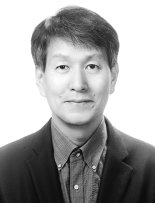[Koo Bon-young Column] The 'Jongmyo View' Should Not Be an Excuse to Let Jongno District Fall into Slum
- Input
- 2025-11-24 18:07:17
- Updated
- 2025-11-24 18:07:17

The redevelopment issue of Sewoon District 4 has been a 'hot potato' for two decades, during which severe slumification has occurred. Sewoon Plaza, completed in 1968, had a section of its exterior wall fall off two years ago, injuring a merchant. This has fueled calls for redevelopment. However, the project's feasibility was in question. The Seoul Metropolitan Government adopted an ordinance to increase building heights near Jongmyo Shrine, aiming to shift relocation costs onto developers. Recently, the Korea Heritage Service, citing a UNESCO recommendation, insisted that a World Heritage Impact Assessment is necessary, further intensifying the conflict.
'Development or preservation?' This is a perennial issue worldwide. As someone who once studied urban planning, I see it that way. Thus, it seems natural that the Korea Heritage Service opposes, while the Seoul Metropolitan Government supports, the redevelopment near Jongmyo Shrine. The former’s primary purpose is to protect cultural heritage, while the latter’s priority is the well-being of citizens.
However, the political debate appears crude. Instead of professional insight, only predetermined black-and-white logic stands out. Recently, Kim Min-seok, Prime Minister of South Korea, visited Jongmyo Shrine with Heo Min, head of the Korea Heritage Service, among others. He sharply criticized Oh Se-hoon, the mayor of Seoul Metropolitan Government, who seeks to build high-rises nearby. He remarked, 'I worry that blocking the view from Jongmyo Shrine will suffocate and suppress its spirit.' In response, Mayor Oh retorted, 'Is it right to leave an urban eyesore like Sewoon Plaza in front of a world-renowned site such as Jongmyo Shrine?'
Not only Prime Minister Kim, but also Jeon Hyun-hee, Park Joo-min, and Seo Young-kyo—candidates for Seoul mayor from the Democratic Party of Korea (DPK)—have joined the debate. Ahead of next year’s local elections, they seem to be targeting Oh Se-hoon. While they claim to champion heritage preservation, they appear blind to the reality of Jongno District’s decline into a shantytown.
Gregory Henderson, who served as a counselor at the U.S. Embassy in Korea in the 1960s, was a lover of Korean cultural assets. As a political scientist, he sharply criticized Korean politics in his book 'Korea: The Politics of the Vortex.' He wrote, 'In Korean society, where everyone swirls around in pursuit of political power, any issue can escalate into a political dispute.' The current dichotomous 'Jongmyo view' controversy in politics makes me feel his observations remain valid even today.
Fundamentally, it is right to preserve world heritage sites well. However, Seoul is home to ten million citizens. While honoring Jongmyo Shrine, which enshrines the royal tablets of the Joseon dynasty, it is equally important to improve the deteriorating city center to enhance citizens’ quality of life and urban competitiveness. New York is larger than Seoul in total area, but its per capita park area (14.7m2) is smaller than Seoul’s (16.2m2). Yet, no New Yorker complains that the skyscrapers surrounding Central Park have ruined the view.
Jongmyo Shrine is a space specialized for rituals. In this context, the opinion of Lee Jun-seok, leader of the Reform Party (RP), seems candid: 'Rather than its architectural features, the value of Jongmyo Shrine lies more in its intangible elements—such as the Jongmyo Daeje and ritual music—and its role as a park in the city.' Therefore, I wonder if it makes sense to obsess over the 'Jongmyo view' when, even if Sewoon Plaza is demolished and green space increases, Jongmyo Shrine itself remains untouched.
Of course, even if redevelopment is inevitable, a shift in perspective is needed. The Seoul Metropolitan Government recently raised the building height limit in Sewoon District 4 from 71.9 meters to 141.9 meters on the Cheonggyecheon Stream side. The aim is to secure both profitability and green space by increasing building height and reducing the building coverage ratio. The Shard, a 310-meter, 72-story tower located 800 meters from the Tower of London, serves as a reference. Its tapered design minimizes visual obstruction. Even if a site is 500 meters from the main hall of Jongmyo Shrine, there is no reason for Seoul to insist on uniformly tall buildings.
Ultimately, resolving the redevelopment issue near Jongmyo Shrine requires moving beyond the political vortex. Even from the Pyramids, the buildings of Giza City are visible in the distance. Thus, it is problematic for politicians to use inflammatory arguments as an excuse to neglect the slumification around Jongmyo Shrine. It is more desirable to discuss redevelopment with building heights and designs that harmonize with Jongmyo Shrine. After all, striking a balance between development and preservation is the true role of politics.
[email protected] Reporter